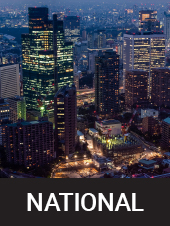Cuba’s national electrical grid shut down on Friday after one of the island’s major power plants failed, Cuba’s energy ministry said, plunging the entire country into a blackout.
The Communist-run government earlier in the day closed schools and non-essential industry and sent most state workers home in a last-ditch effort to keep the lights on for residents.
But shortly before midday, the Antonio Guiteras power plant, the country’s largest and most efficient, went offline, prompting a total grid failure and leaving approximately 10 million people without power.
“There will be no rest until (power) is restored,” Cuban President Miguel Diaz-Canel said on X.
The crisis had already prompted officials to cancel all non-vital government services. Schools of all levels including universities, have been shuttered through Sunday. Recreational and cultural activities, including night clubs, were also ordered closed.
The government said only essential employees of the state-run food and healthcare industries should report to work on Friday.
Grid officials said they did not know how long it would take to re-establish service.
The crisis marks a new low on an island where life has become increasingly unbearable, with residents already suffering from shortages of food, fuel, water and medicine.

Virtually all commerce in Havana was shut down at midday on Friday. The hum of privately-owned generators could be heard in some homes and restaurants, and many residents sat sweating on doorsteps with windows open as the sun broke through the clouds.

Get breaking National news
For news impacting Canada and around the world, sign up for breaking news alerts delivered directly to you when they happen.
Prime Minister Manuel Marrero on Thursday blaming ongoing rolling blackouts during the past several weeks on a perfect storm well-known to most Cubans – deteriorating infrastructure, fuel shortages and rising demand.
“The fuel shortage is the biggest factor,” Marrero said in a televised message that was garbled by technical difficulties and delayed several hours.
“The situation has worsened in recent days,” the prime minister said. “We must be fully transparent … we have been halting economic activities to ensure energy for the population.”
Strong wind and heavy seas that began with Hurricane Milton last week have crippled the island’s ability to deliver scarce fuel from boats offshore to its power plants, officials said.
Cuba’s government also has long blamed the U.S. Cold War-era embargo, as well as a fresh round of sanctions under former President Donald Trump, for difficulties in acquiring fuel and spare parts to operate its oil-fired plants.
The island’s two largest power plants, Felton and the now-offline Antonio Guiteras, are both under-producing, the government said, and require immediate maintenance, part of a four-year plan to revitalize Cuba’s decrepit infrastructure.
Cuba’s fast-growing private businesses, which have contributed to increased demand on the island, will be charged higher rates for the energy they consume to compensate for shortfalls, Marrero said.
While demand for electricity grows, fuel supply has all but dried up on an island that produces comparatively little of its own.
Cuba’s largest oil supplier, Venezuela, has reduced shipments to the island to an average of 32,600 barrels per day in the first nine months of the year, about half of the 60,000 bpd sent in the same period of 2023, according to vessel-monitoring data and internal shipping documents from Venezuela’s state company PDVSA.

PDVSA, whose refining infrastructure is also ailing, has this year tried to avoid a new wave of fuel scarcity at home, leaving smaller volumes available for export to allied countries like Cuba.
Russia and Mexico, which in the past have sent fuel to Cuba, have also greatly reduced shipments to the island.
The shortfalls have left Cuba to fend for itself on the far costlier spot market, at a time when its government is near bankrupt.
Electricity officials said they nonetheless expect power generation to improve in the coming days as the weather allows fuel from prior deliveries to be distributed around the Caribbean’s largest island.
—With additional files from the Associated Press





